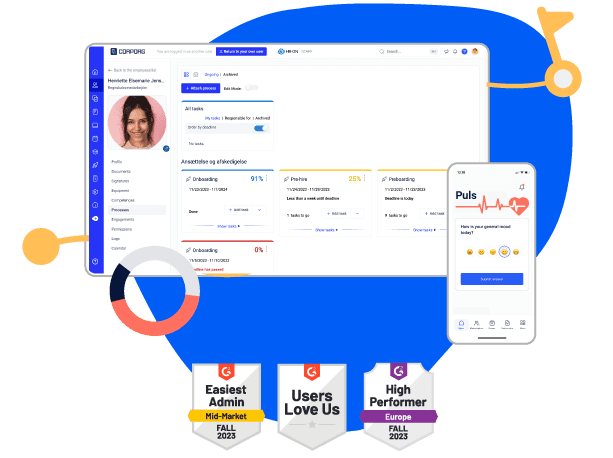Workplace Well-Being Cards
Workplace well-being is more than just a buzzword – it’s the foundation of a healthy work life. Moving from theory to practical solutions, we proudly introduce our Workplace Well-Being Cards.
Workplace Well-Being Cards
About the game: The Workplace Well-Being Cards encourage open dialogue about employee well-being through fictional scenarios. They can be adapted to different work environments and should be used continuously.
Goal: To promote workplace well-being
Duration: 1+ hours
Number of participants: 2-7+

Workplace Well-Being Cards
About the game: The Workplace Well-Being Cards encourage open dialogue about employee well-being through fictional scenarios. They can be adapted to different work environments and should be used continuously.
Goal: To promote workplace well-being
Duration: 1+ hours
Number of participants: 2-7+

Fill Out the Form and Download
Fill out the form, and you will receive your free resource via email.

Workplace Well-Being Cards: A Brief Overview
The Workplace Well-Being Cards are built on three theoretical pillars: Shadow Themes, Employee Archetypes, and Sociodrama.
Ralph Stacey introduced Shadow Themes, which refer to hidden conversations and challenges not openly discussed in the workplace. Helle Hein’s Archetypes at Work helps leaders understand different behavior patterns and adjust their strategies accordingly. Jacob Levy Moreno developed Sociodrama, which is used to explore and resolve social and organizational challenges.
The cards promote open dialogue about employee well-being in a safe environment. They allow employees to explore emotions and challenges through fictional scenarios and serve as a continuous tool for achieving the best outcomes. The primary target audience is office employees, but it can be adapted to various workplaces and needs.
How to Use Workplace Well-Being Cards
Here’s an easy guide on how to use the cards. You can follow the approach, but feel free to tweak the rules to fit your organization:
- Let’s get started with a well-being card game.
- The game is designed for all types of offices and features well-being cards depicting various fictional workplace situations. Pay attention to the emotions that arise and how well-being is affected. Identify the challenge presented by the well-being card and develop potential solutions.
- The game is intended for 2-7 players, who should collaboratively work towards a solution. If you have more players, that’s fine as long as everyone agrees.
- Players sit together in a circle and take turns drawing a card, which is read aloud to the group. The group then has a few minutes for each player to reflect on the card before a collective dialogue begins.
- The goal is for players to immerse themselves in the situation and engage with the fictional well-being card. The player who drew the card starts by sharing their proposed solution, after which other players can contribute their thoughts. Everyone should participate.
- The group should decide how much time to spend on each card and how to contribute, but we recommend at least 10 minutes per card or until a common solution is reached. Raising hands can be used to indicate when someone wants to speak.
- You can play all the cards at once or split them into multiple sessions.
Enjoy the game!
Struggling to Get Started? Use Role Cards!
Need help getting started? Don’t worry; you can also use the Role Cards. The Role Cards are an additional set of cards that you can combine with the Well-Being Cards. If employees find it difficult or are reluctant to share their opinions, Role Cards can assign a player a specific role to a player.
- The package includes a set of Role Cards that can be used with the Workplace Well-Being Cards.
- You can assign each player a specific role during each round if you think it will improve the dialogue in the game.
- When the game begins and a player draws a well-being card, all players should also draw one role card. Multiple players can share a card if there are more players than role cards.
- Once the well-being card has been read aloud, each player reads their role card privately. Then, everyone has time to reflect on the well-being card and how they will approach it in their new role.
- After that, the dialogue begins. Players do not need to mention their roles, but if you feel it’s best for the game, you can disclose them.
- When a round with a well-being card is completed, the role cards are collected and shuffled, and players draw the cards again.
Explore our popular HR system and strengthen your processes!

